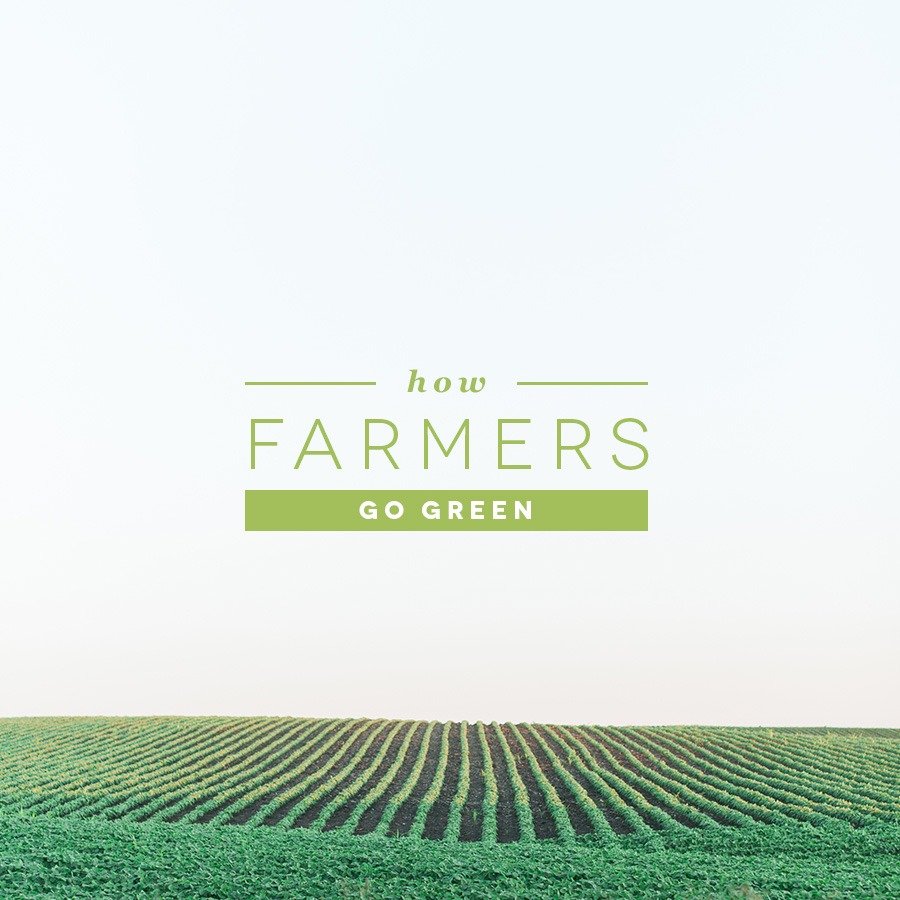How Farmers Go Green
It’s St. Patrick’s Day, and green is everywhere. He may not be Irish, but that doesn’t stop local farmer, Jeff Thompson, from going green on Saint Patrick’s Day, or any other day for that matter. Sustainability is something he implements daily on his family farm near Colton.
“I farm some of the same land my grandfather purchased in 1877,” said Jeff. Thanks to advancements in research and technology, Jeff grows more food using less crop inputs than his grandparents.
It’s a trend that’s been on the rise as the family farm has changed hands through the generations and one Jeff plans to continue. Focusing on growing food in a sustainable way means someday he can pass the family business to his nephew who is just starting to get involved.
What are some of the ways Jeff goes green? One of the basic practices is rotating corn and soybean crops to make sure the plants don’t deplete the soil of important nutrients. This is like what many gardeners do to keep their seedbeds healthy and productive. He also enriches the soil with manure from a nearby dairy.
Soil sampling is another important part of his sustainability plans. He uses the information to create digital maps of his fields, uploads them into his tractor’s precision technology system and then applies just the right amount of fertilizer needed to grow his crops. Similar technology in his planter and sprayer ensure he doesn’t waste seed or overspray.
“Today’s farming technology helps me use just the right amount of seed and crop inputs to reduce waste,” said Jeff. “My planter has row shutoffs so when I turn, it stops dropping seeds where I already planted. The same is true for my sprayer. It also has an automatic shutoff to keeps me from overlapping pesticide applications on the end rows.”
Like most farmers in South Dakota, Jeff plants seeds developed through biotechnology that are resistant to the pesticides he sprays. This way he kills the weeds while the seeds flourish. GMO seeds also require less water, meaning they can tolerate dry weather to reduce or eliminate irrigation.
Sometimes sustainability involves doing less.
Conservation tillage helped Jeff cut his fuel usage and protect his most valuable resource: the soil. While tillage helps to create a good seedbed for planting, too much can lead to soil erosion. In the fall, he leaves cornstalks and soybean stubble in his fields to prevent the land from washing or blowing away. By spring, he can either plant directly into the stalks or make one quick tillage pass before he plants. Doing less tillage helps him keep more soil in his fields and fuel in his tank.
He has also reduced his liquid petroleum usage by upgrading his corn dryer to an energy-efficient version. He uses the dryer in the fall to reduce moisture in his corn before storing or selling it. Since building it two years ago, he has cut his liquid petroleum use in half.
Jeff’s not alone. Today, 63 percent of U.S. farmers practice conservation tillage, up from 36 percent 20 years ago. According to a report released by Field to Market, the Keystone Alliance for Sustainable Agriculture, farmers have also reduced soil erosion over the past 30 years by 47 to 67 percent, and greenhouse gas emissions by 15 to 42 percent depending on the type of crop grown.
So, as you celebrate going green today, remember to tip your hat to farmers who are growing your food in a sustainable way every day.
Have questions for Jeff about his pesticide use or other sustainable farm practices? Leave them in the comments below.
Learn more about how farmers go green during planting season with agronomist Joe Schefers.


